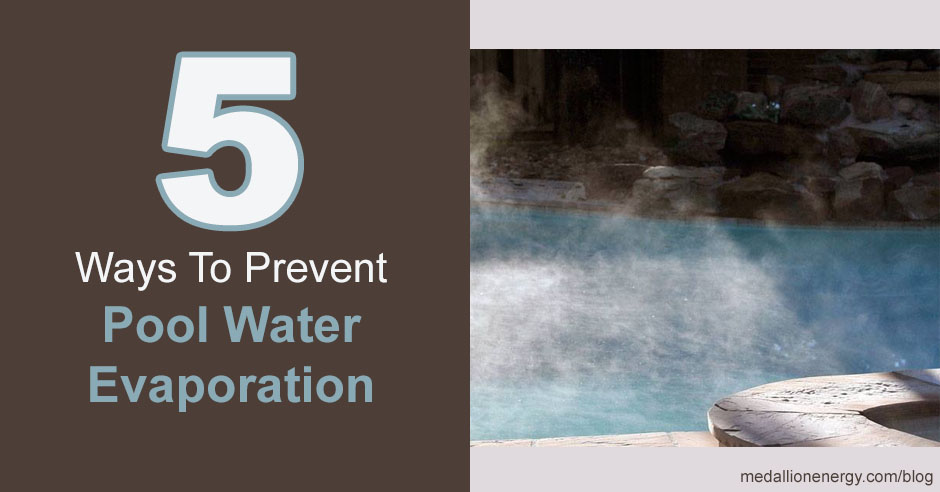Your swimming pool loses a lot more water than you might think. On average, most pools lose 1/4 inch of water per day. Over a year, that’s more than 20,000 gallons of water.
And here’s the thing, water loss happens for a number of reasons. But there’s one cause of water loss that’s bigger and badder than all the rest.
It’s the cause for 70% of pool water loss across America:
Pool water evaporation
Evaporation is the exact reason why your swimming pool naturally loses so much water. And when the hot summer months come rolling around, it can be merciless. But that doesn’t mean you’re helpless to it!
There are plenty of useful ways to prevent pool water evaporation. And in this post, we show you 5 simple strategies for doing just that.
But before we start, let’s make sure you go in prepared. When dealing with evaporation, knowing the causes is your biggest advantage.
Causes of pool water evaporation
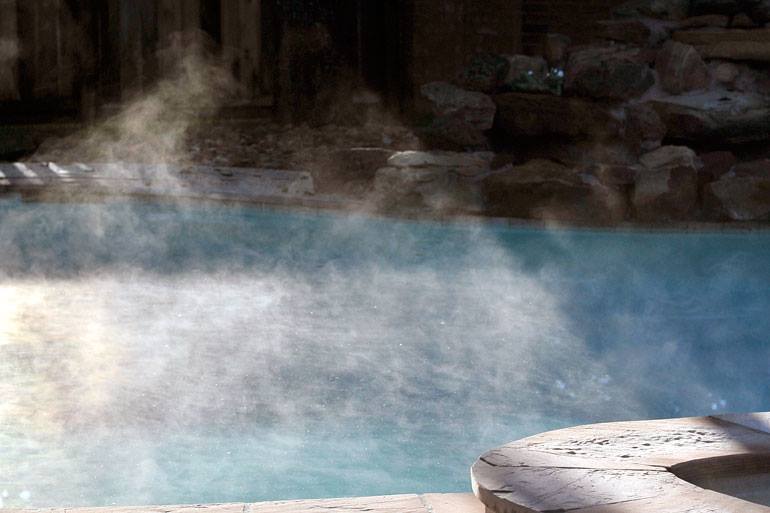


Dry heat/lack of humidity
Water evaporation works in a pretty simple way:
Dry areas with low humidity experience the most evaporation (places like California and Arizona).
While areas with high humidity experience the least evaporation (places like Florida).
Why?
Because evaporation works just like a sponge. A dry sponge (dry area) absorbs WAY more water than a wet sponge (humid area).
Too much direct sunlight
If your pool gets a lot of consistent sunlight, then it’s naturally going to be hotter than a pool in the shade. Especially since the sun warms both your water and the area around your pool.
This increase in temperature, from sunlight, speeds up the natural process of evaporation. And from there, your pool releases the excess heat in the form of vapors.
Pool water temp vs Outdoor temp
Sometimes, heat alone is enough to cause pool water evaporation. Whether the sun is out or not, if there’s a big enough difference between the temperature of your pool and the temperature outside, evaporation is inevitable.
Similar to the last point, as your water warms up, it begins shedding some of that excess heat. Just like a pot of boiling water lets off steam as it gets hotter and hotter.
NOTE: While evaporation is a major cause of water loss, there a few others worth mentioning. Other common causes for water loss include leaks (in the pool or pipes), excessive filter backwashing, and splash out from regular swimming.
Is it a leak or evaporation? | How to test water loss
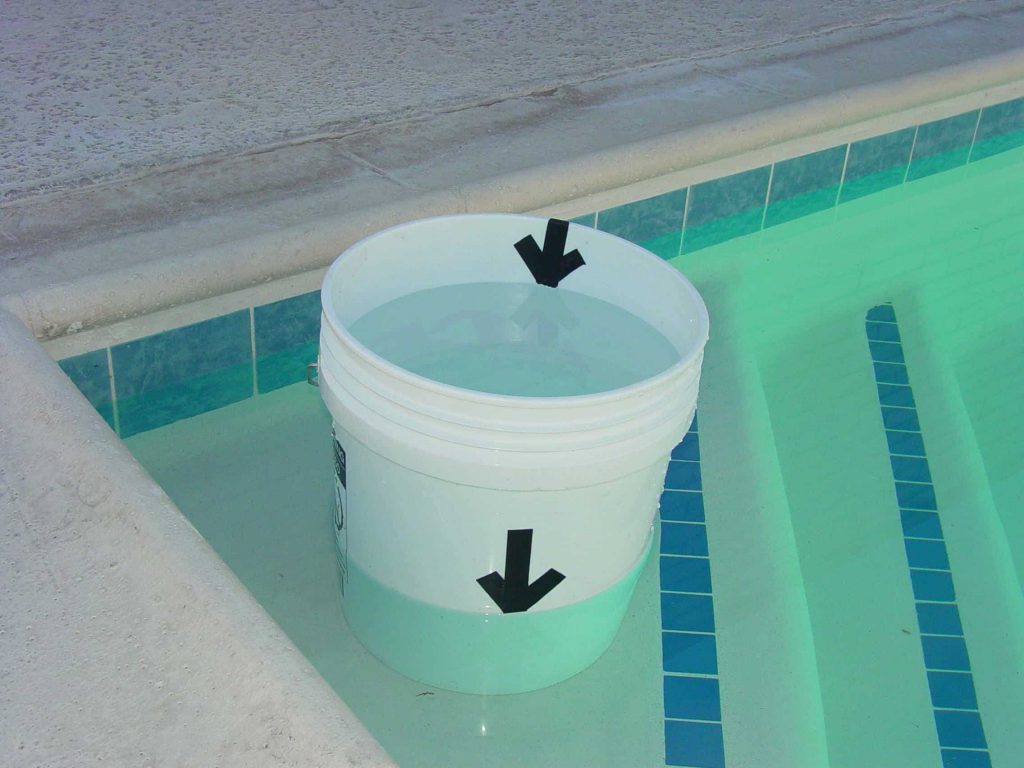


Sometimes it’s hard to know whether you’re dealing with a pool leak or evaporation. Luckily, there’s a pretty simple test for figuring that out.
You can use the water bucket test to quickly find the source of your pool’s water loss.
Here’s how to test for water loss:
- Fill your pool to mid-skimmer level
- Fill a 5-gallon bucket with water, 2 inches from the top
- Mark the water level inside the bucket
- Place the bucket on the first step going into the shallow end
- OR place the bucket on the pool deck near the water
- Mark the water level in your pool
- Wait 2-3 days
- Measure the water loss in your bucket (in inches)
- Measure the water loss in your pool
- If these numbers match, the cause of water loss is evaporation
- If the water loss in your pool is greater than the water loss in the bucket, you have a leak
5 Easy Ways To Prevent Pool Water Evaporation
Use a solar cover
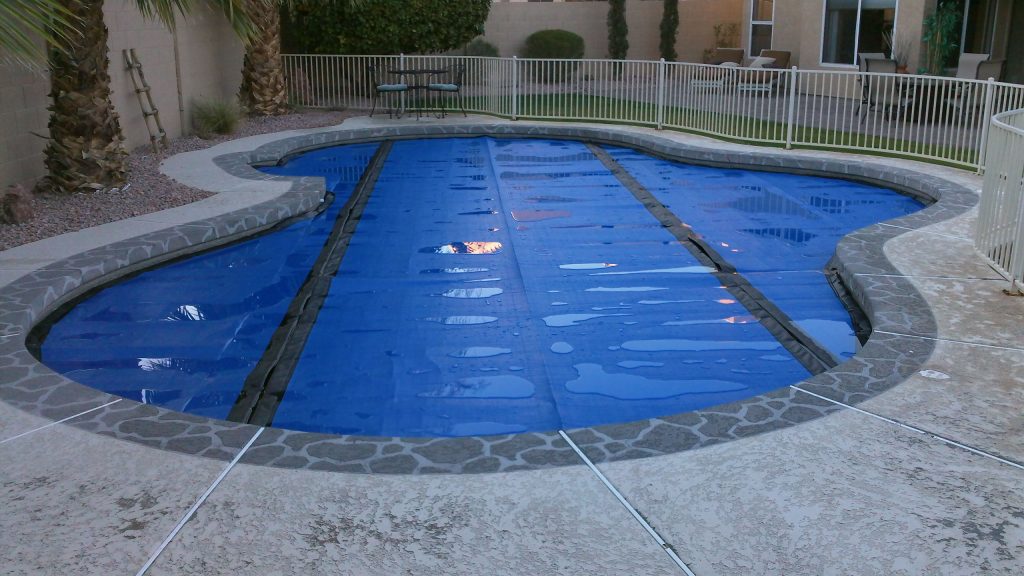


There are plenty of great reasons to use a solar cover for your pool. For one, covering your pool reduces evaporation by more than 75%. But if that’s not already great enough, it also improves heating efficiency.
A covered pool is a lot like a covered pot of water on a stove (get used to this analogy).
If you let it gently boil while covered, it’ll heat up faster and retain most of the water inside. But, it if you heat it up uncovered, it’ll not only take longer but also cost you more water in the process (excess steam/evaporation).
Bottom line: Use a solar cover to GREATLY reduce pool water evaporation, improve heating, and conserve water
Related: 7 Ways To Extend Your Pool Season
Use a liquid pool cover
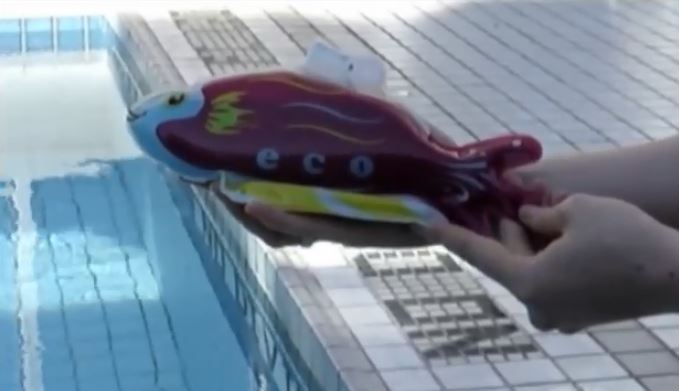


If you’re not quite ready to buy a pool cover, then a liquid cover is a great temporary substitute.
Liquid pool covers work by adding a protective layer of non-toxic, “sun-blocking” chemicals to your pool. This invisible layer of chemicals floats at the surface of your water and works just like a cover, slowing down heat loss and reducing evaporation.
Some liquid covers last a few days, while others only need to be replaced once a month. You can be single treatments, like the “fish” above, or get them in bulk by the bottle.
While they don’t work quite as well as solar pool covers, they’ll help you reduce pool water evaporation in a pinch.
Cool down your water
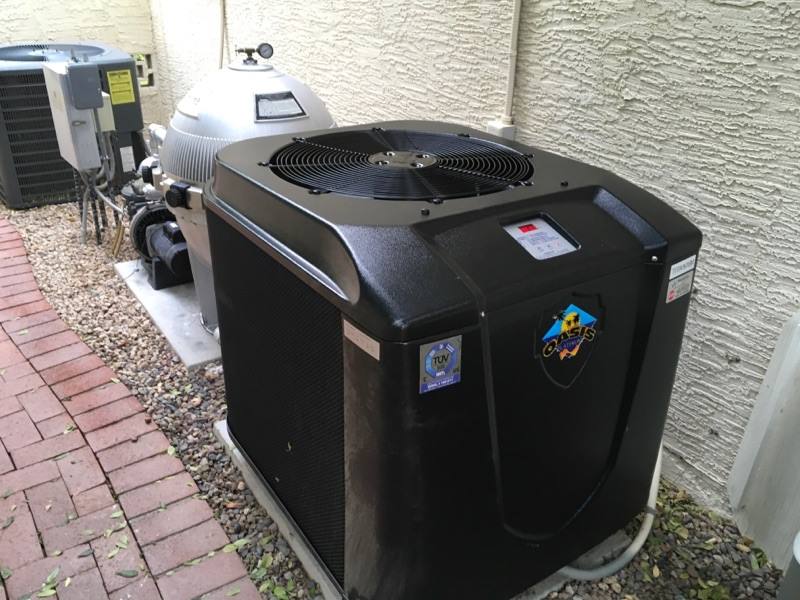


Most pool water evaporation is caused by your water getting too hot. So that means the easiest way to stop it is by keeping your water cold.
In most cases, your goal will be to warm up your pool. But keeping your pool cool during hot weather is just as important – it keeps natural evaporation at a minimum. And when that happens, you save water, chemicals, and energy.
The easiest and most effective way to cool down your pool water is with a pool heat pump.
While not all pool heaters include a water cooling feature, heat pumps like the Oasis Ultra Quiet can do both. So whether you need to warm up your water on a chilly autumn morning, or cool it down during a mid-summer heatwave, a pool heat pump has you covered.
If you don’t have a pool heat pump, a few other decent ways to cool down your pool include:
- Run your filter at night (when it’s cooler)
- Add cold water with a hose
- Install a water fountain
Related: 9 Ways Owning a Pool Heat Pump Improves Your Life
Turn off waterfalls and fountains
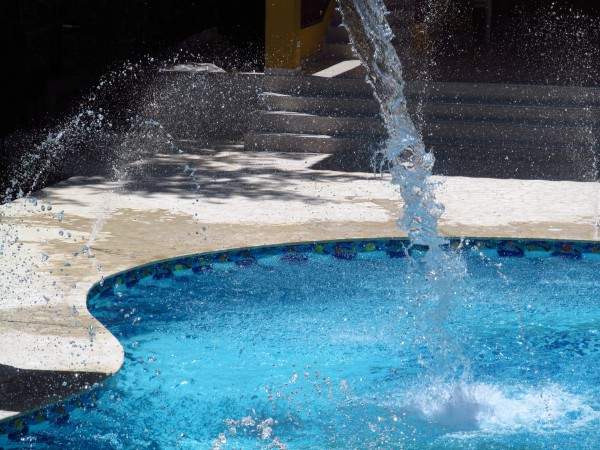


While waterfalls and fountains make a beautiful, aesthetic addition to any swimming pool, they come with one major drawback:
They “waste” water.
Waste might be a strong word. Technically, they increase your water’s surface area by spreading it out into exposed streams and sprays. Especially the ones that sprinkle water into droplets as opposed to continuous streams.
This is bad for one reason.
The more surface area your pool water has, the faster evaporation takes places. And that’s how they “waste” water. So if you’re trying to conserve water and prevent pool water evaporation, it’s best to keep your features off when you don’t need them.
Add a wind barrier (pool enclosure)
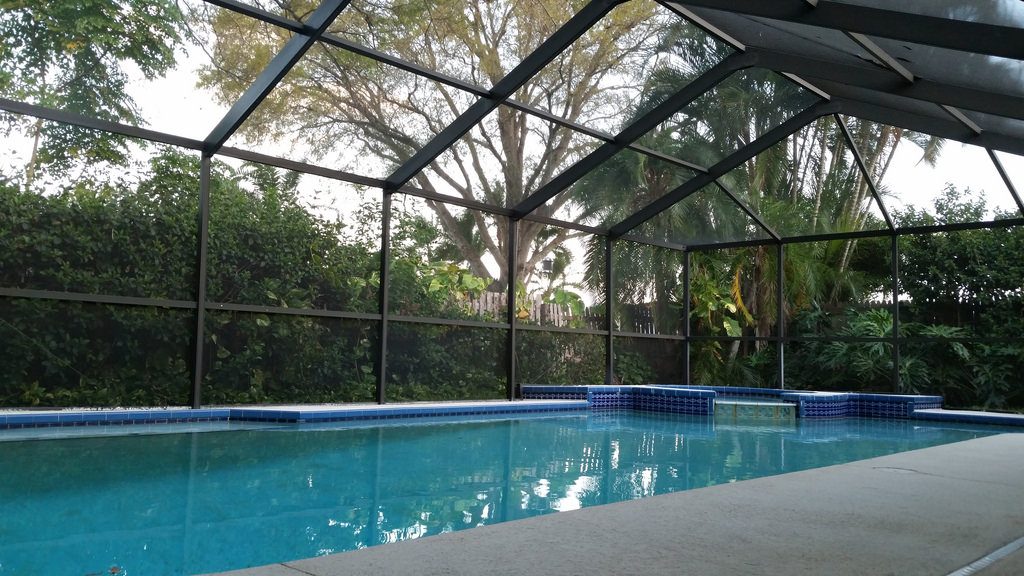


The relationship between wind and your pool’s temperature is simple to understand:
If’s it’s hot out, wind speeds up evaporation by increasing your water’s surface area (with ripples) and making it release heat faster.
But if it’s cold out, that same wind can help cool off your pool.
However, we’re focused on evaporation. So the main takeaway here is that blocking the wind (in any way), is good for reducing evaporation.
Pool enclosures are the most effective solution, as they block wind from ever touching your water. But they’re also the most expensive. Alternatively, a screen enclosure, solid fencing, or even bushes/trees can serve as great windbreaks.
Bonus Tip.) How to slow down pool evaporation and conserve water
Evaporation will always happen, but if you follow the above tips, you can prevent most of it. That said, there’s still one more thing you can do.
Try using an automatic leveler.
Automatic levelers keep your water line at the perfect level around the clock. And they also help you quickly replace any water lost by evaporation, before it gets worse.
If you want to save yourself the time and effort of constantly adjusting your water level, an automatic leveler can help. And it ensures that you only use what you need, and not a drop more.
Closing thoughts on preventing pool water evaporation
Limiting pool water evaporation is pretty easy when you have the right approach. It’s all just a matter of knowing how to counter the conditions that cause it.
By covering your pool, controlling water temperature, and blocking out the wind, you can prevent evaporation and conserve more.
If you liked this post, you might also like:
7 Best Ways To Lower Swimming Pool Bills By Up To 50%
11 Simple Ways To Automate Pool Maintenance
Fix a Green Pool in 5 Easy Steps

